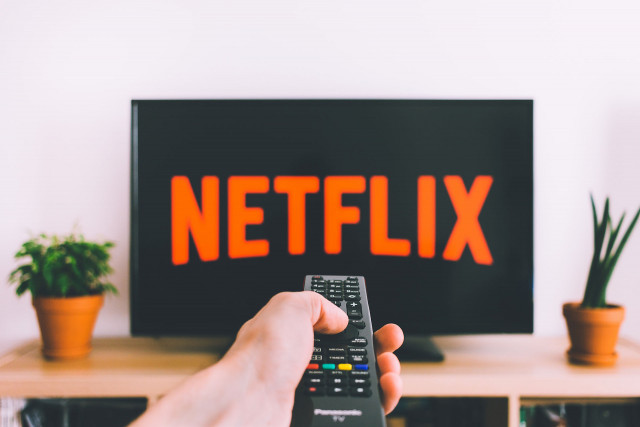Programmed Discoverability: The Urgency of Acting to Support Francophone Content on the Web
It is urgent to regulate in order to ensure access to Canadian and francophone content, given the recommendation algorithms used by American multinationals.

The government of Canada must play a key role to ensure that the Canadian cultural market does not become a simple digital colony of foreign companies offering broadcasting and online distribution that shape our new way of accessing and consuming culture.
A number of important events held in the first quarter of 2019 bear witness to the growing awareness and unprecedented mobilization of the players in Canada’s cultural and media industries around the issues linked to the examination and necessary adaptation of our broadcasting and telecommunications laws to the current context. Here are some of the recent events that have contributed to the evolution of thinking about the impact of digital, and particularly the internet, on the legislative and regulatory framework of our cultural and media ecosystem:
- The Montreal conference on the future of broadcasting, distribution, creation and francophone production in the digital era1 CEMAD, held January 24th at HEC Montréal;
- The Francophone, Francophile and Creative Montreal Forum2 , hosted by Culture Montréal on February 7th and 8th;
- The 19th Congress of the Provincial Communications Sector Council3 (CPSC), held February 8th to 10th in Orford with the theme The Third Wave of the Internet: Global Interconnection; and
- The Canadian Internet Governance Forum, hosted on February 27th in Toronto by the Canadian Internet Registration Authority (CIRA/ACEI).
Stay informed, subscribe to the FRIENDS newsletter
You are a few fields away from becoming a friend.
Having had the privilege to be invited to speak or intervene at all of these events and to participate in the public debate about the potential features of a new law and regulation for the future of broadcasting of our francophone productions, and on a framework for the activities of the multinational web giants (Facebook, Amazon, Apple, Netflix, Google and Spotify), I wanted to make a useful contribution by sharing my thoughts on the crucial issue of online discoverability of francophone content. At a time when the web is celebrating its 30th birthday (March 12, 2019), and when its founder, Tim Berners Lee, has launched a campaign to “save the web” (November 2018), this document is a plea to awaken public opinion about the role of the platforms, which can be both friends and enemies of discoverability, capable of threatening the cultural sovereignty of our states.
If there is a link among these different events, it is that all the players across various industries are unanimous in expressing the urgency to act to establish regulatory fairness and to reduce the asymmetries and imbalances caused by the multiple transformations created by the big digital players; and on the other hand, the need to protect and promote our creators and their work (particularly francophone content) and to make them accessible and discoverable in the digital environment. All are calling on the CRTC in its capacity – and indeed its agility – not to wait until it has finished its examination of the Broadcasting Act to modify certain regulations and provisions that govern access to the cultural market, competition, and taxation of digital companies, especially with regard to broadcasting/distribution and the promotion/reach of Canadian content online.
When we think specifically about discoverability, it’s fair to ask: how can our francophone content exist, remain visible (easy to find and accessible) and capture consumer attention when it is drowning in a flood of dominant foreign content (anglophone or American) and being distributed through a continuous flow of recommendation algorithms?

While we think of our francophone uniqueness as an asset, especially in the battle for attention, and in the greater one for diversity of cultural and linguistic expression on the internet, machine language and algorithms see this uniqueness as a weakness or a deficiency. The amount of available francophone content does not achieve a true critical mass that would trigger a network effect. If, as defined by l’Office québécois de langue française (OQLF), discoverability is “the potential for a piece of content, a product or a service to capture the attention of a web user in a way that helps discover new or different content”, then the potential for discoverability of francophone content is, by default, lesser, or insufficiently interesting to fulfil the criteria of regional or semantic algorithmic associations necessary to trigger the recommendation mechanisms that other, similar content enjoys, even if this is only with regard to the content’s language of origin.
In this context, it is worrisome to observe that from the point of view of the representation of diversity of identities and cultures online, the relational cultural identity that one should be able to enjoy as a francophone belonging to an international community of francophone web users consuming French-language content online is fraying and mutating progressively into a ‘refuge identity’, that of a threatened and resistant minority seeking to remain visible, like a drop of water in the immense ocean of the web.
A study published in June of 2017 by l’Observatoire de la diversité linguistique et culturelle dans l’Internet found that French is the fourth language of the internet, with 6.5% of content produced, behind English (32%), Chinese (18%) and Spanish (8%). Given that the percentage of francophone web users is estimated to be 5.4%, it is tempting to think that there is a very good productivity ratio of francophone content, at 6.5%. But in reality, the challenge that these statistics reveal lies less in the level of production of francophone content than in its discoverability and effective online consumption.
The problem that arises with a certain acuteness is that the dominant platforms (Facebook, Amazon, Apple, Netflix, Google/YouTube and Spotify) which have imposed themselves as the new global suppliers of cultural content, have also begun to develop, produce and distribute their own content (for example Netflix Originals); and these constitute an ‘oligopoly of discoverability’ with the algorithmic power to engineer and orient global cultural consumption.
When we talk about discoverability, what is important is no longer just the characteristics or the intrinsic potential of the content to be discovered, or the ability to learn about new content. Discoverability must no longer be examined solely as the process of a meeting between the work and its audience. This approach masks or minimizes the effects of the process itself, through which the public decides which content or cultural products to consume, to the detriment of other choices.
What we are seeking to demonstrate here is the fact that the discoverability process is increasingly programmed, i.e. controlled and strongly predetermined by the platforms through a combination of their editorial logic, their personalized recommendation systems and the commercial and marketing strategies linked to their business models. This ‘programmed discoverability’ is dictated by a whole set of criteria and algorithmic criteria and rules, but also by the basic conditions of use, distribution and exploitation of content to which creators and producers are subjected, and to which users and subscribers to these platforms contribute (particularly through their usage data, which helps to improve the performance and precision of the algorithms). With ‘programmed discoverability’, we are no longer simply in the era of recommendation: we are entering into the era of meta-recommendation, i.e. the recommendation of that which must be a priori recommendable.
It seems that programmed discoverability has put an end to the multiple perspectives that we enjoyed in serendipitously searching the web, as we have done since the dawn of the web, with its multitude of intuitive hyperlinks. Is it really still possible today to discover content on the web purely by chance, without a preceding search or online activity being linked to the content discovered? In reality, the web is no longer fertile terrain for discovery by ‘happy accident’. When we look at it closely, it seems that impromptu discovery of new content is always linked to the history and aggregation of the traces of our previous navigation, minimal as they might be, and to our usage of various applications and digital platforms that are always scrutinizing our online behaviour.

Netflix’s algorithms are certainly the champions at this game of programmed discoverability, as we can see from recent strategies aiming to divert our attention and focus it more often on its own Netflix Originals. For example: the larger size and the personalization of the illustrations of original content, the captivating ads and promotional videos that auto-play when your cursor moves over a piece of content, and the new notation system to evaluate the relevance of a piece of content in relation to our personal tastes.
Taking the example of the notation system, it’s worth emphasizing that since April of 2017, when the five-star classification system was replaced with a new click system (with icons representing thumbs-up if you like the content or thumbs-down if you don’t), Netflix has put a serious dent in cultural diversity. With its new notation system, Netflix has eliminated the possibility of creating a hierarchy of content using some degree of nuance, giving less popular content a greater chance of success. With the new system, either you like it (thumbs-up) or you don’t (thumbs down). In this way, the platform will only recommend content similar to what you have most liked, systematically relegating content similar to the ones you have rated thumbs-down to the back of the catalogue. This content will see the likelihood of being recommended by the Netflix algorithm (used primarily to classify and create the hierarchy of content displayed in horizontal rows on the home page) plummet or virtually eliminated.
With the old five-star system, our appreciation of the content could vary from one to five stars. This gave at least a small chance that the content we appreciated somewhat (for example two or three stars out of five) could still be recommended to us. In the absence of stars for content that is somewhat appealing to us, we are delegating to the Netflix algorithm the choice of trying (and risking being wrong) to determine among thousands of films and series, those that could, using their own criteria, be relevant or even be a perfect fit for our tastes.
But what are the criteria the platforms use to determine the personalized relevance of available content? For example, does the platform allocate any importance to our geolocation, considering the fact that we are connecting from Quebec, for example, and that we are more interested in francophone content? Or, on the contrary, is this criterion less relevant for the platform than the current popularity of content according to broad trends, and therefore the content most likely to capture our attention, while allowing the platform to respond to commercial imperatives driven by the industrial logic of the star system?

The answers to these questions are not obvious, and indeed this is where many research efforts bump up against the ‘black box’ of algorithms, the complexity and opacity of their workings and the nature of their designers’ intentions. To what extent are the cultural recommendation decisions made by algorithms at Netflix, YouTube, Google Play, iTunes and Spotify automated without human intervention? To what extent, despite the refinement of the algorithm, does this still require major input from humans (content curators like Guillaume Moffet, who works for Spotify out of Toronto, trying all day long to inject Quebec content into the many playlists on the platform)? And is it enough for an artist or a piece of content (less well known by the public) to be present on the most popular playlists or on the home pages to be guaranteed discoverability and to reach an audience? The answer undoubtedly no. And then you have to take into account the many automated calculations, relying on the exploitation of our personal data and usage statistics, which could amplify the potential discoverability of a piece of content by sending it on multiple trajectories, all driving inevitably towards its target audience or broader take-up. From there, it makes sense to ask at what point cultural distribution algorithms create biases linked to manipulation and purely commercial objectives which are totally inimical to the very principles of diversity of cultural expression or cultural democratization. When will algorithms understand that for the future of humanity, they must stop closeting users in ‘filter bubbles’ and favouring the rise of homogenized thinking and culture shaped in Silicon Valley?
From programmed discoverability to reprogramming algorithms to cultural mass offerings is a slippery slope: that of the new digital cultural imperialism that transforms the supposed increased cultural choice into concentration and standardization of global cultural consumption, imposed on us to the detriment of our curiosity and our thirst to discover new talent and new content. Really, the more choices there are, the less we choose. From that point, the consumer drops the ball at the very moment when (often unconsciously) he or she delegates choice to the platform, all while maintaining the illusion of free choice. No algorithm is neutral, especially not the ones from the GAFAM or FAANGS of this world. The very principle of net neutrality must be redefined to take this into account, above and beyond the technical dimension of transmitting content without discrimination throughout the network, the issue of responsibility, whether it is the platforms or the equipment manufacturers who use different strategies to lock users into their ecosystems of applications and limit their choices, as is the case through applications preinstalled or pre-recommended on the home screens of our smartphones and connected devices.
It is high time to reflect on a regulatory framework which would orient and compel these algorithms to serve cultural diversity, while requiring transparency and accountability from the platforms in the selection, hierarchy and recommendation of content. We call for a more intelligent regulation of artificial intelligence, while requiring foreign platforms to contribute to the creation, promotion and distribution of local content. The future of Canadian and francophone content in a digital world depends on it – as does the very survival of cultural diversity and multilingualism on the internet.
The government of Canada must play a key role to ensure that the Canadian cultural market does not become a simple digital colony of foreign companies offering broadcasting and online distribution that shape our new way of accessing and consuming culture. What is at stake, as we speak, is that if we let the platforms decide on the orientation of our cultural programming, they will affirm, in their defence, that they are only offering Canadians what they want to consume in the way of cultural products. We cannot allow the status quo or laissez-faire to continue in the name of sacrosanct market self-regulation. Self-regulation can no longer apply when a handful of oligopolies are dictating their own rules, privatizing the web and everything on it, and worse, using our own cultural system as the open door through which they will take control by grabbing the keys (the users) and locking the door behind them.
These companies must be constrained, at a minimum, to favour and promote the discoverability of Canadian content (and particularly francophone content) through a quota or a minimum level of recommendation of local content. We must be constantly vigilant to ensure that our future laws and regulations allow Canadian to access and to consume a rich and diversified offering of relevant and francophone content from here, content in which they recognize themselves and whose export will also contribute to the influence of Canadian and Quebec culture around the world and in the Francophonie. And if this requires an investment in a digital space to develop a global francophone platform, as the government has proposed (through the Minister of Tourism, Official Languages and la Francophonie), the moment is ripe to explore this option, leaning on a cultural operator like TV5.
1Conférence extraordinaire de Montréal sur l’avenir de la diffusion, de la distribution, de la création et de la production francophone à l’ère numérique
2Montréal francophone, francophile et créative
3 le 19ème Congrès du Conseil provincial du secteur des communications, « La troisième vague d’internet – l’interconnexion globale ».

